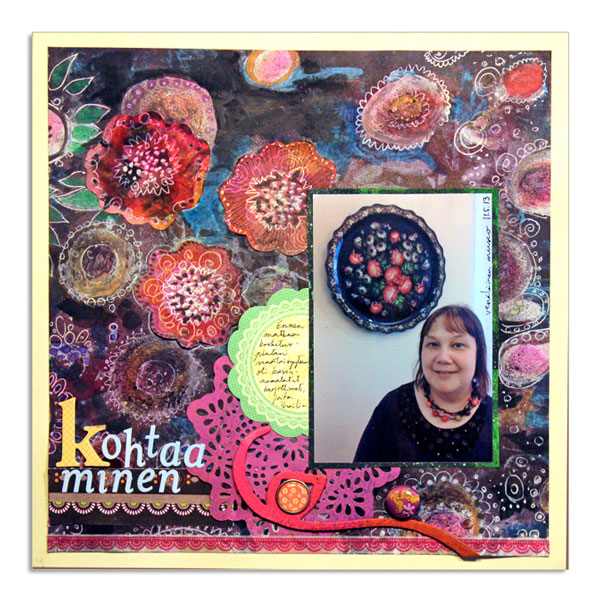Explore by Drawing!
This blog post is illustrated by students of the 4-week online workshop Inspirational Drawing. All the illustrations shown here are created at the class by these wonderful artists: Dianne Guerin, Ellen Schulz, Terri Elverum, Joan Gaetz, Alison Schockner, Cheryl Rayner, Carol Dickson, Debbie Kreischer, Virginia Clinton, Rosemary Bosse, Mary Joyce Weening, Donna Peake, Joyce Brown, Nancy Kvorka, Judy Shea and Janet Joehlin.
I have often thought about the contradiction between maintaining who I am and being open to what I can become. My friend said that when you know somebody for a long time, you can look through life circumstances and see the person that’s behind all those. And still, while situations change, we change too.
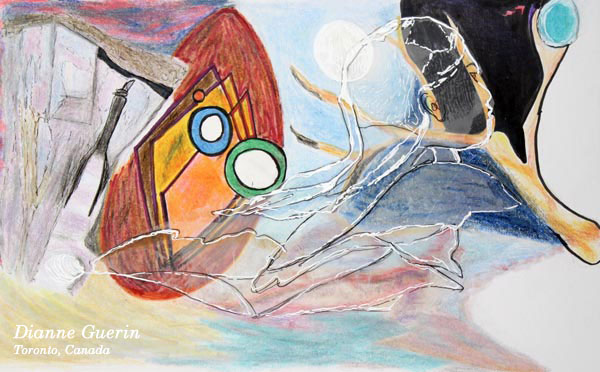
By creative drawing, we can find out where we are swimming and how deep we can go.
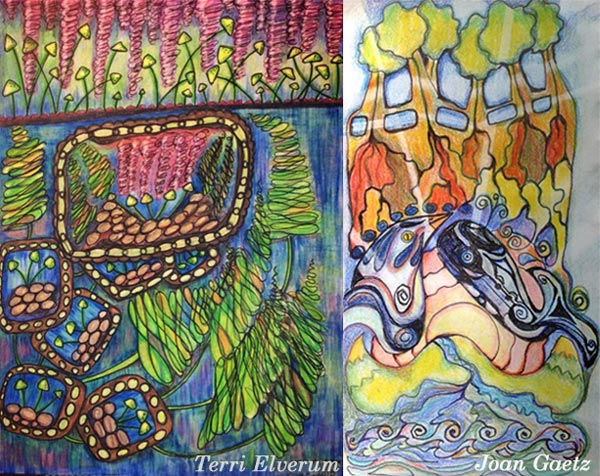
We can take personality tests but sometimes the best way to find out what kind of fish we are is to take a pen and start drawing.
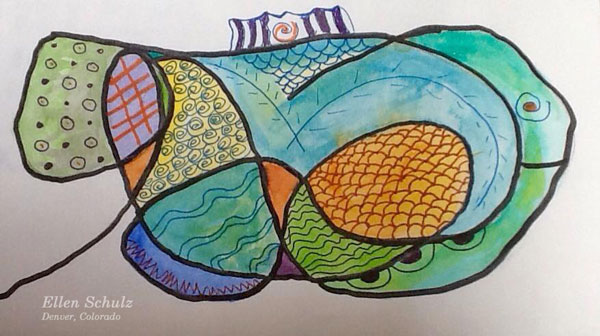
By drawing, we can explore how we see ourselves in our surroundings.
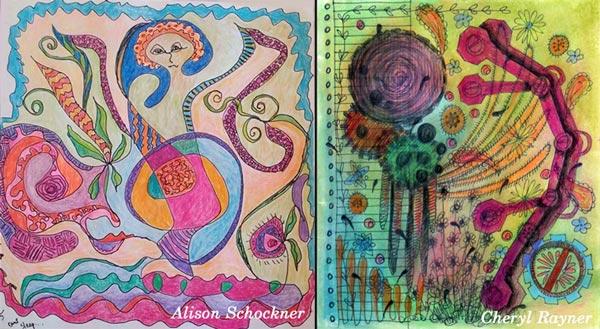
We can pick ideas from new places and cultures.
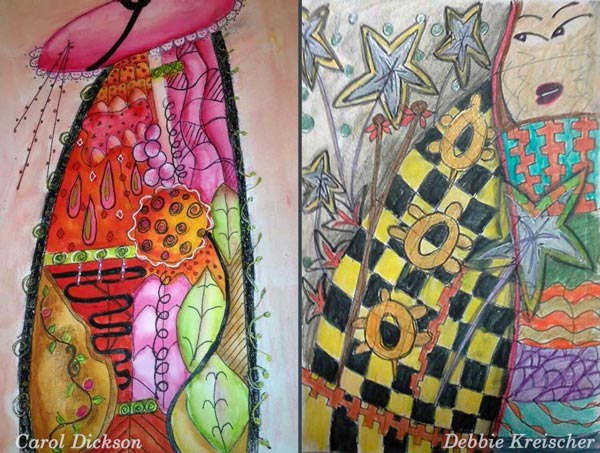
And we can explore what’s going on inside our minds.
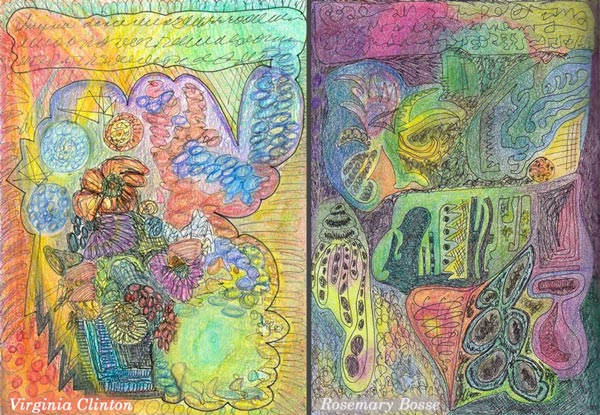
When we illustrate what we seem to be and how we see the world, new combinations start to grow and inspire us.

Our art journals become our inspiration books.
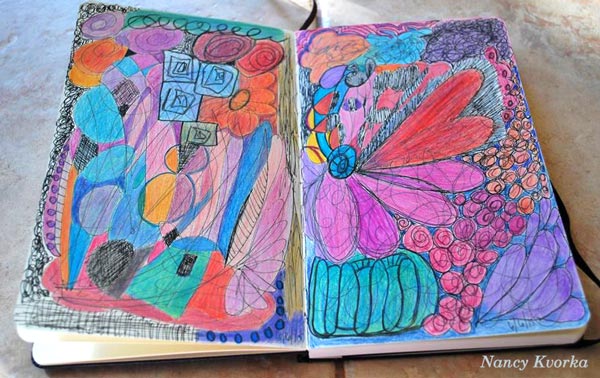
If we just use thinking, we can endlessly question our creativity and ability to find new solutions. But when we get into the habit of creative drawing, it will be evident that we are creative people regardless of circumstances.
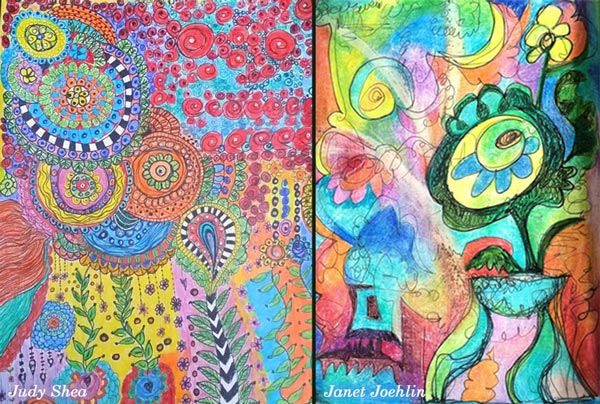
When we draw out our new thoughts and ideas, we become more aware of who we are and what our style is.
Let me be your mentor in art: Subscribe to my weekly emails!
Art Journal about Love for Home!
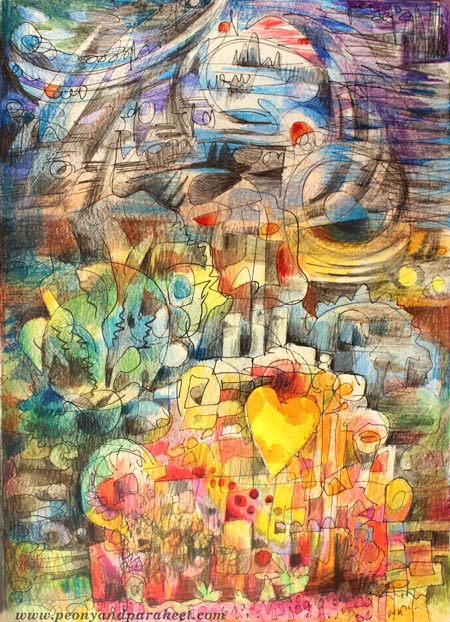
I am honored to be the featured artist in Documented Life Project this week! The theme is Hometown inspiration: “There is no place like home”. This, if any, is suitable for me and for my art journal! I had a stay-at-home mother and we did not travel much as a family. Probably because of that, I have always loved being at home. When I worked away from home, I missed it all the time. Nowadays, especially every morning when I wake up, I am extremely grateful to be able to work from home!
Let’s create an art journal page to celebrate home!
1) Background – Outside from Home
How do your surroundings look like when you are not at home?
Bring those things to the background of your page!
I thought about the situations when arriving home is most appealing. The house, and the living room couch, looks the most welcoming after walking the dogs on a bad weather.

Being a dog owner and living in Finland, I have been in the middle of snow storms, pouring rain and everything between.

2) Focal Point – Inside Your Home
Pick some of the items from your home which represent your love for home!
I wanted to express the experience of staying inside, feeling happy, warm and safe from the blowing winds. A couch and house plants are good symbols for that.
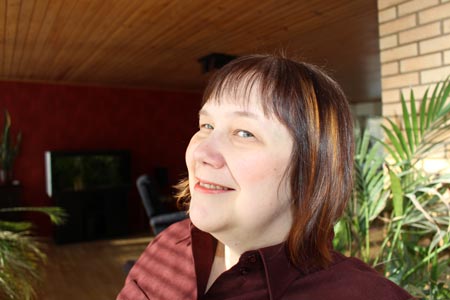
3) Location, Location!
Create the page where you feel most at home!
We, visual people, are often very easily affected by the environment where we create. To make sure that the page would express of a warm and comfortable place, I created the page by sitting on the living room couch.
4) Start by Drawing Freely
Draw and doodle on the page. Don’t worry too much about the end result!
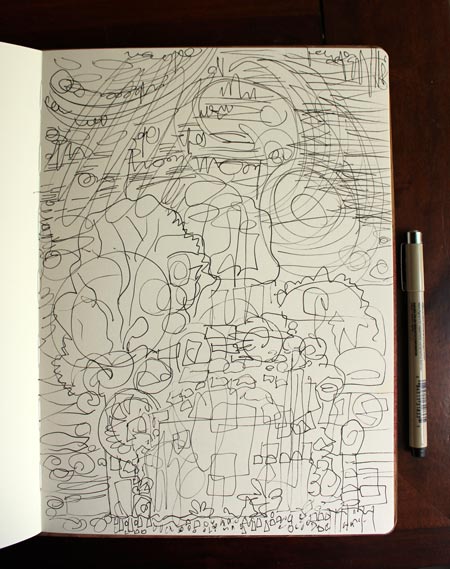
5) Add Color (+ 3 new ideas)
To make sure that your page expresses an experience and is not only a static illustration, add few new thoughts and ideas when coloring the page.
1st: For me, the first idea was the green color. Namely, living in Finland is not only enduring snow and rain. Now in summer, we have daylight almost through the night. Actually, if you read this on 20th June, we Finnish will be celebrating Midsummer, one of our biggest holidays.
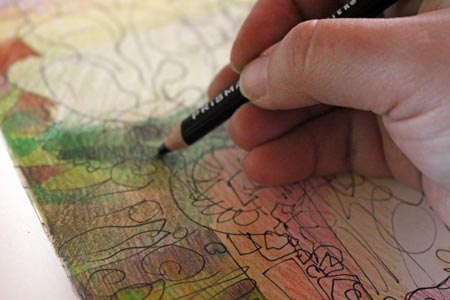
This photo was taken just a week ago when walking the dogs 11 pm in the evening.

2nd: My second new idea was that home is not only a house or an apartment. It is a mental state. When I feel at home, my cup gets filled, I become peaceful and energetic at the same time.
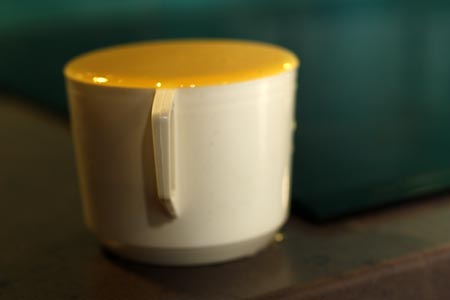
The combination of peace and energy looks yellow to me. So I made sure that the focal point has a lot of yellow. I also cut a yellow heart and glued it to the page with a gel medium.
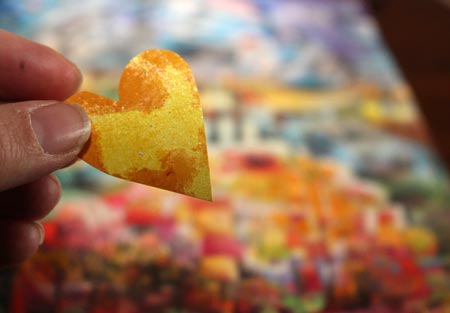
3rd: Where ever we go, we always carry a piece of home with us. My third idea was to add some red spots to the background to express that.
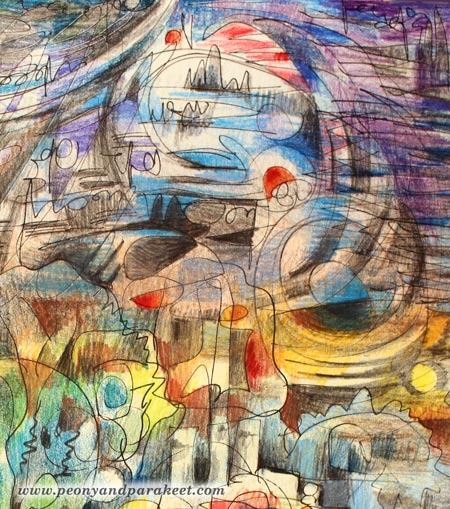
Boosted Expression
When you bring new ideas and thoughts on the theme while you are creating, you are not only making the page look more lively and expressive. You are also allowing your thoughts to move forward with creating.
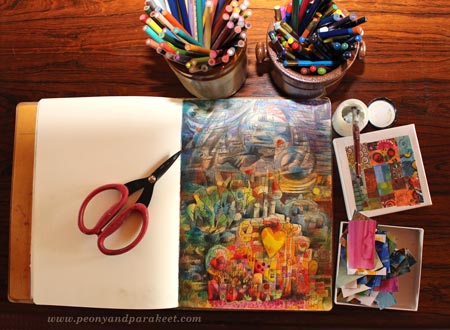
Supplies Used
A black drawing pen (Micron 0.8 mm), colored pencils, a piece of scrap paper and some gel medium were the only supplies used on this page.
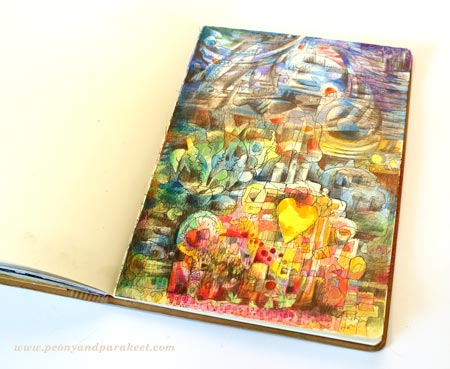
Subscribe to my weekly emails – Get a free mini-course!
See What You Think!
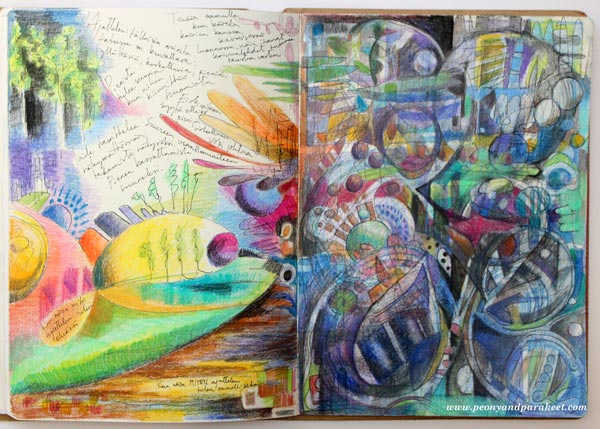
Here’s an art journal spread that I created from two little incidents: the intellectual and the emotional.
Visualizing an Intellectual Incident
Last week I went to an art gallery to see Ola Kolehmainen‘s photography exhibition. I often get very emotional when I see art, but this time I was more intrigued by structures and concepts. Ola Kolehmainen’s photo collages had a cubistic touch. They inspired me to experiment with squares and arches.
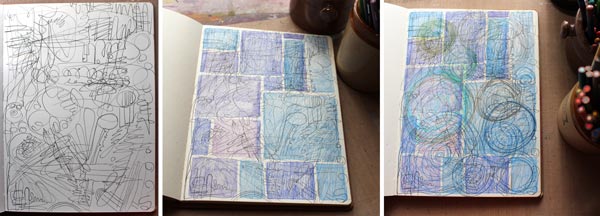
The art journal page looked pretty stiff and formal at this point. But also I felt excited about how it would direct my thoughts when continuing drawing and coloring.
Perfection Needs Order
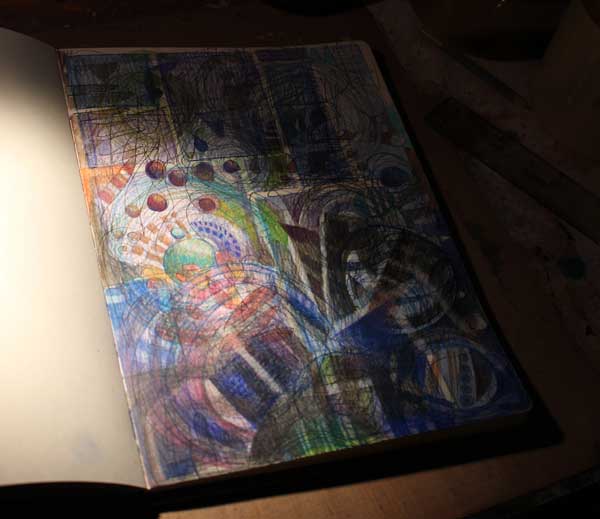
Working intuitively means that I do not always know what ‘s going to appear next. I just focus on a small area at the time. While listening to some opera pieces, I remembered how close mathematics and music were in the 18th century. One of the great mathematicians Leonhard Euler was also extremely interested in music. I feel that similarly, drawing can be an experience where we use the intellectual side. By drawing we can find out new solutions, practice nuances and fine-tune shapes until everything seems to be in its place. Like Euler said: “… in any thing where there is perfection, there is necessarily also order.”

Visualizing an Emotional Incident
But then, when we aim for perfection, we often miss the experience. Like the exhibition last week – I went out without noticing any particular change in my feelings. Then, this morning when walking the dogs, I saw the growing leaves and how they glowed against the sun. The sight was so beautiful, although pretty ordinary at this time of the year. Nevertheless, it felt like opening the door to a great gallery – to nature’s supreme art exhibition!
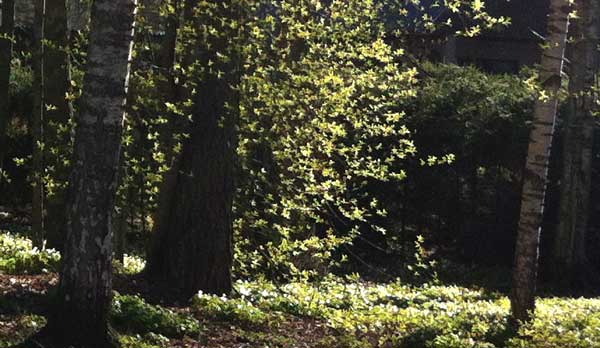
Combining The Intellectual and Emotional Incidents
When I got back home, I thought that it would be interesting to express the controversy of the intellectual and the emotional on the same spread. First, I drew my nature experience with careless lines but with clarity. Then I made it work with the page that had become very detailed but pretty complex.
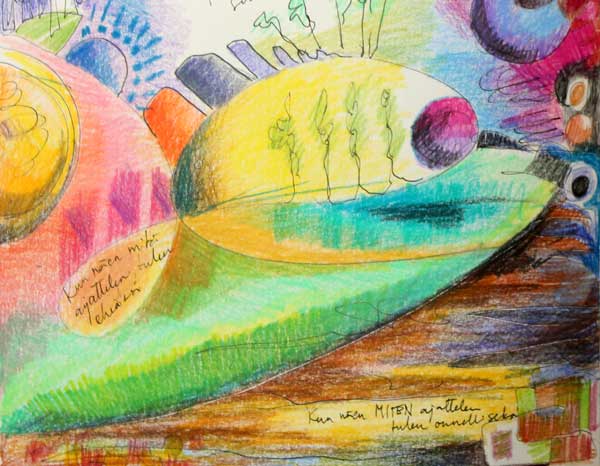
I wrote: “When I see what I think, I become whole” and “When I see HOW I think, I become happy”.
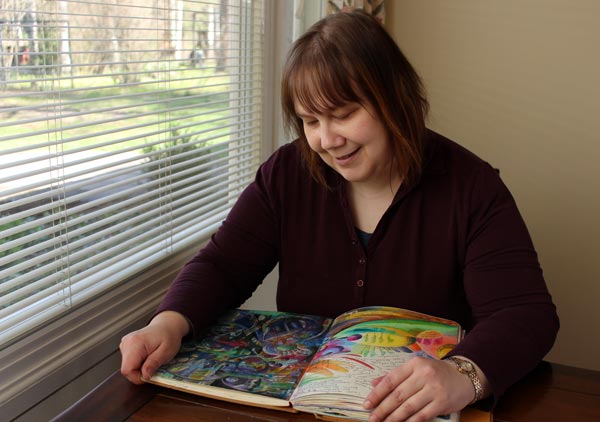
This page spread is not only about going to the art gallery last week and walking the dogs this week. It is what happened inside me and how these incidents were combined. They continue my story as an artist and help me to stay in touch with myself.
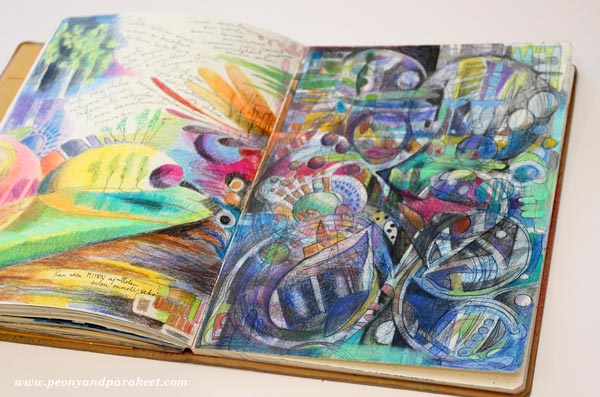
Visualizing thoughts and experiences bring it all together. There’s a lot of inner power in seeing what you think.
Subscribe to my weekly emails – Get a free mini-course!
Paint Your Mental Images!
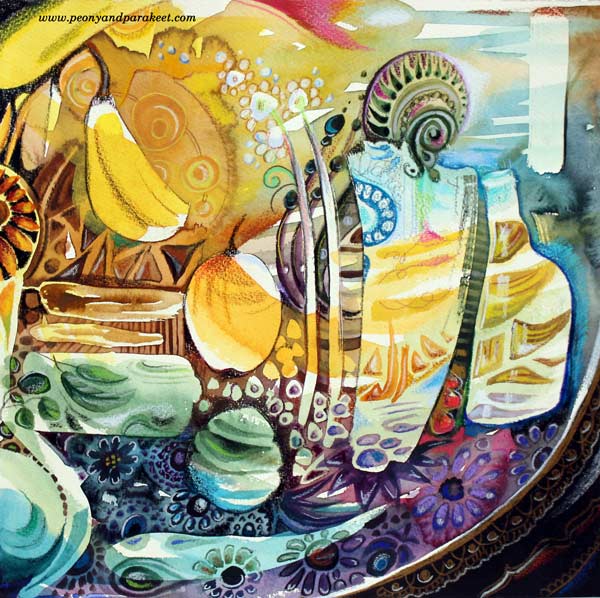
This artwork is inspired by the subject that keeps on fascinating me: beautiful objects like Russian handpainted plates! My admiration for them began many years ago, and only got stronger when I saw them in 2013 at St. Petersburg, Russia.
Here’s a scrapbook page which I made back then. My husband took the snapshot in The Russian Museum. Even if I look a bit worn out from the amount of walking we did during our travel, I love how my clothing and the plate match up!
We also bought one plate as a souvenir. I placed it on the table near me while finishing the painting. Just to keep me inspired to fine-tune all the details. But let’s not go that far yet! Before that, a lot happened, in my mind at least!

From Photos to Mental Images
Before starting the painting, I spent quite a lot of time thinking what to paint and how. I feel that it is easiest to think while walking, so I took the dogs out to the snowy nature. Then I took some photos, which is also a great way to observe and examine things.

After my beagles had fallen asleep, I browsed the photos. “There’s a difference of how I those subjects in my mind,” I thought. If I think of a Russian plate, I might see one detail of it, then other images come to the mind, then the fraction of a Russian plate again. The thoughts move so quickly that the images seem to get mixed up and change.
I could not help looking up what psychology says about it. Yes, there’s a concept called mental image and several theories about how mental images are formed in the mind.
What I find fascinating is, that when creating art, we tend to pick one photographic image instead of a mental image. Then we get disappointed when the artwork does not represent the realistic, photographic image. Replicating the photographic image to the mental image is extremely hard. Let’s try! Look at any of the photos above, then close your eyes and imagine every little detail of the image – impossible! Similarly, if you read a story for the first time, then try to repeat it exactly from word to word, you will certainly fail! But could we paint what we remember and see in our minds, like Edward Munch said: “I painted only memories, adding nothing, no details that I did not see.”
Using Mental Images in Art
I thought it would be both philosophically and practically interesting to use the mental image as a starting point for a painting. So, I decided to paint the mental image of my souvenir, the decorated plate. I forcefully thought about the plate for few minutes. But at the same time (as focusing on one thought is so dull), I was also cleaning. When I grabbed the morning newspaper to put it away, I saw an article of Paul Gauguin‘s artwork being sold at a high price. Just when I had gathered my thoughts around the Russian plates, there it was, a picture of Gauguin’s art! Whoosh … my mental image changed to a mixture of a decorative plate and Gauguin’s art, not just that specific one but many others too that I have seen!
While walking towards the room where I create art, I saw a banana on the kitchen counter, then thought about the wine we are going to taste to celebrate my coming birthday. My mind wondered towards glass objects – how I love them and how I should really paint only them … Before I began painting, my mental image had grown into a huge collage!
The complex thing in mental images is, that if you think very visually, holding the static view is difficult. Instead of trying to focus on one thing only, let it go and replace it with a more general subject. I chose my love for decorative art, beautiful concrete things and how they are at their best when they represent the beautiful shapes and shades from nature.
Instead of trying to build one controlled mental image first, accept the short-term, fractional nature of them. My artwork could be a collection of mental images appearing while I work. To emphasize that, I decided to start the painting with masking fluid. That way I could not even start building one complete image.
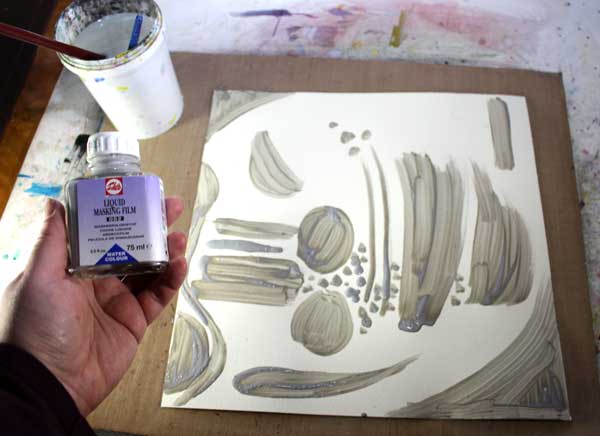
Masking Fluid
… or liquid masking film as my bottle says creates a rubber-like surface which you can remove afterward. You can add as many layers of paint as you like, then remove the masking fluid and you still have white areas to fill – or you can pick a colored area which you want to preserve and cover it with the fluid. It is a great way to obtain a layered look without too much thinking. Just remember to let the fluid dry properly before moving forward.
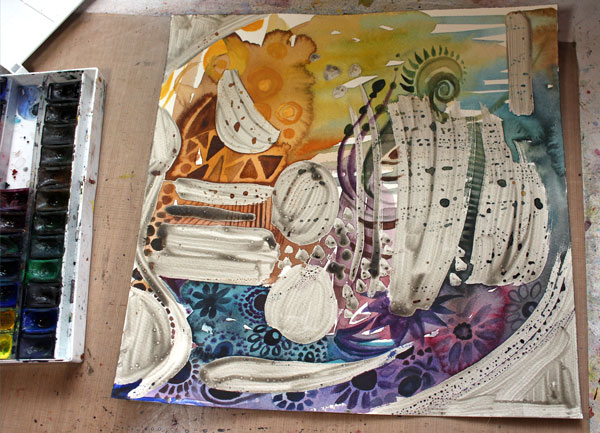
You can remove the dried fluid easily just by pulling it off with your fingers. With the help of the fluid, I was able to create very detailed areas before focusing on bigger objects so that they still look very sharp.
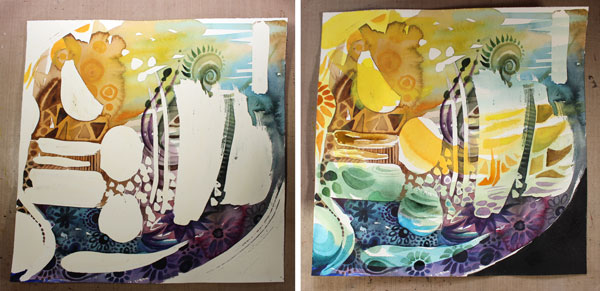
The painting was finished with colored pencils. The process was very similar to the one I teach in the video “Watercolor 101 for Intuitive Painting“, I just added the masking fluid before starting to paint with watercolors.
Here are some details of the finished piece:
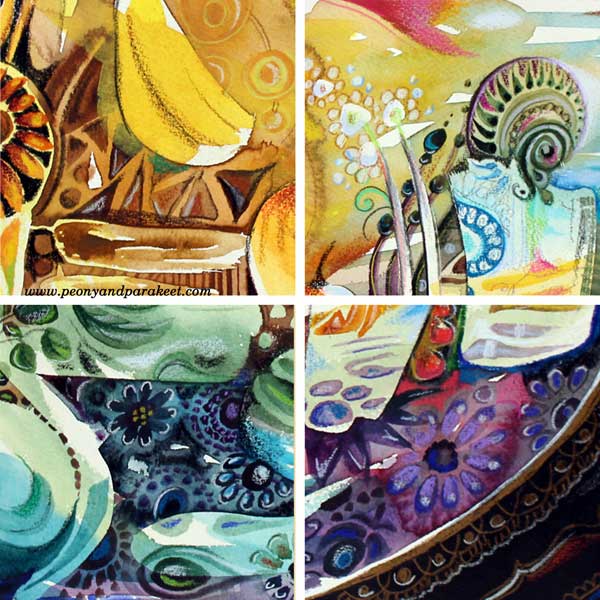
And here’s the painting again:
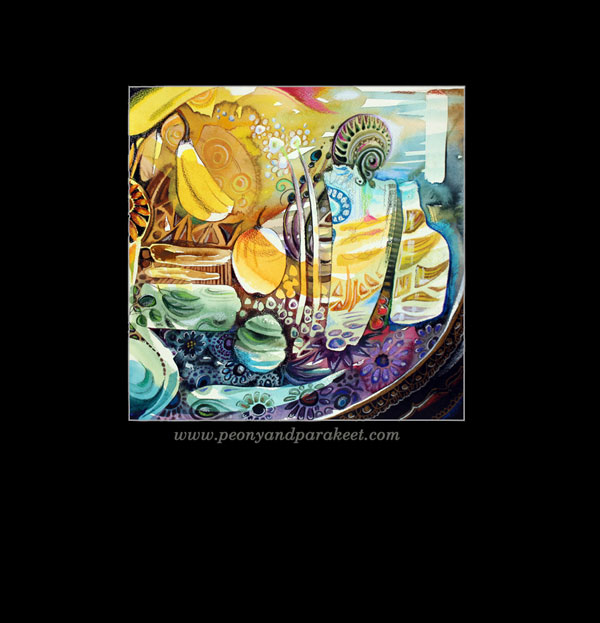
Before finishing, I realized that the banana from the kitchen counter had made it’s way to the painting. It seemed awkward at first but then, why not accept it to be the part of this surrealistic still life, surprisingly exact copy of the collection of my mental images!
What do you think? Could increasing intuition and including mental images improve your art?
Combine ideas with techniques – Buy Imagine Monthly Art Journaling Bundle!
